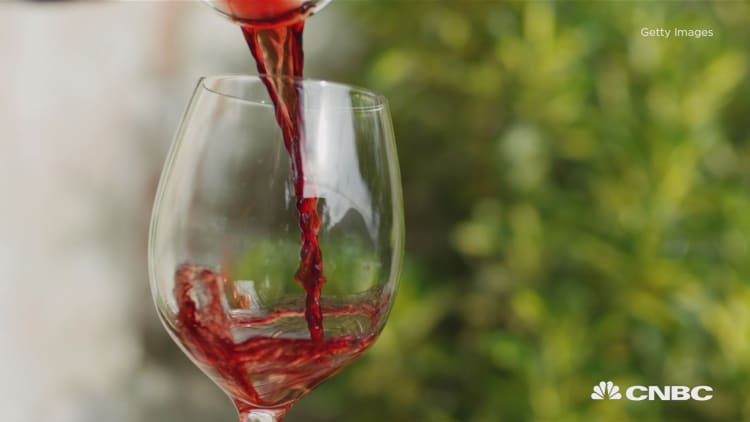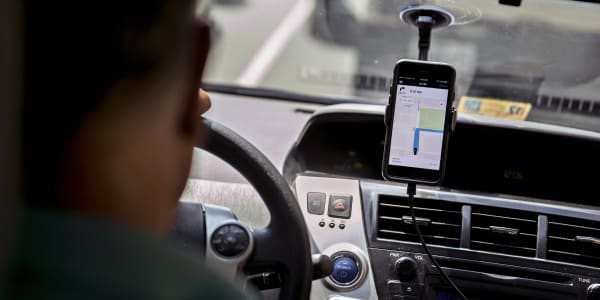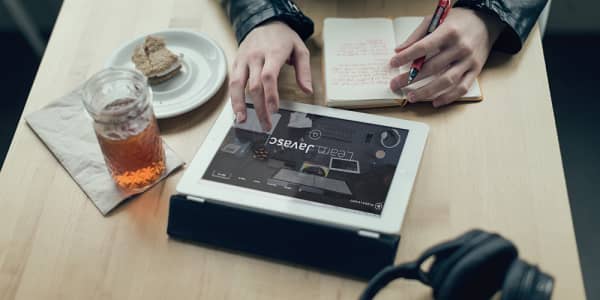
We've all been there. Countless hours spent scouring the wine aisle, trying to find the perfect bottle based on a label and price alone. Wouldn't it be nice to have a personal sommelier, making suggestions based on your taste preferences? Naturally, there's now an app for that.
From your smartphone, Wine Ring uses an advanced algorithm to learn what types of wine you'd rate "love, like, so-so or dislike," and recommends bottles based on your tastes. While there are other wine apps on the market, it's the first to use technology to make suggestions based on individual preferences alone.
Inspired by a new era of technology, the company's founders designed the app with artificial intelligence and machine learning in mind.
"I am extremely excited and hopeful about artificial intelligence and the good that it can bring to the world," said Pam Dillon, co-founder and CEO of Wine Ring. "Together we are creating a landscape — a whole new way of thinking about how we can bring to bear technology — in the context of making these recommendations."
Wine Ring's patented technology compiles a consumer's preferences as one tastes and rates wines. The app makes recommendations based on likes and dislikes, and it builds a user profile that updates each time a new wine is rated. Just as you might use Netflix to find a new TV series to binge-watch, Wine Ring will select a new chardonnay or pinot noir for you to try, but more importantly one that pleases your taste buds.
Dillon spent 15 years on Wall Street before becoming more interested in hospitality and consumer retail. She and co-founder Andrew Sussman then decided they wanted to create a product that could give customers exactly what they wanted, "Where any individual can determine for himself or herself how they feel about a product — how they feel about a consumer experience that they're having — with [Wine Ring's] point of entry being wine," Dillon said.
Now, instead of going into a restaurant and looking at a wine list to try to figure out what you're going to have that night, you have technology to guide you, Dillon explained. "And this doesn't mean you have to make a decision based solely on the technology, but you're using it as a tool."
Through a machine-learning approach, Dillon and her team of engineers and wine experts thought about how they could use a "highly technical" process to solve a simpler problem. The team designed code that could learn patterns — or in Wine Ring's case, taste preferences — over time.
Because there were no data readily available that captured the character of wine or that captured characteristics that were necessary to preference types of wine, Dillon said, "[Wine Ring] had to create it, and it took time."
Today, Wine Ring makes money from licensing its technology to vendors, and from selling the results of the data they collect to vintners, Dillon said. Though she declined to disclose exactly how many people are using the app currently, she said its audience is rapidly growing and stems from 80 countries. It was funded initially out of the co-founders' pockets, and today the company has raised more than $4 million from private investors, Dillon added.
Ian Cauble, master sommelier and founder of SommSelect, said the app is "incredibly important," creating an "unparalleled experience," because consumers can't rely solely on critics to pick their wine and food, something that other apps and business models have tried to do.
Everybody doesn't taste sweetness and bitterness in the same way, Cauble said, because each individual's DNA is different. We all come from different places, we all grow up eating different foods, so "at the end of the day you should enjoy your life, and you should enjoy your sense of taste," Cauble said.
Cauble's SommSelect has a daily wine offering and is working with Wine Ring to integrate the app's software with their wine selections to better help people find drinks they're going to like.
"You don't want to have a wine you spent 50 or 60 or 70 dollars on, that comes to your house, and you taste, and it's too sweet," Cauble explained. "Wine Ring is allowing people to program their preferences into this database of information, which is very complex — more than I even understand."
There's no app exactly like it on the market, Cauble said.
Next Glass, an app launched in 2014, has a similar "snap" feature, which lets users scan wine and beer labels with a smartphone and then gives them a rating -- based on input from other users -- and information about what's in the bottle.
While Next Glass' approach is similar to that of Wine Ring, Dillon's app aims to be more personable and catered to one's individual preferences, answering the one question she believes a wine consumer really wants an answer for: 'Will I like it?'"
Wine Ring is putting the taste for wine straight into your smartphone, Dillon said, creating a tasteful, one-of-a-kind "extension and expression of your own personal preferences."






